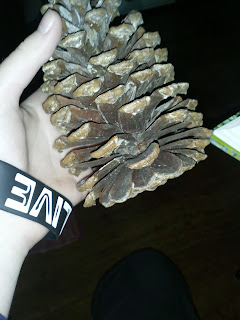43. Pineapples are example of a CAM plant. A CAM plant is type of C4 plant that conserves water by opening stomata only at night, when it fixes carbon by a C4 pathway. It's called CAM plamt because it utilizes crassulacean acid metabolism to adapt to dry conditions.
44. Cheese are one of the things that use eubacteria to produce. Eubacteria is a prokaryote that can be found almost anywhere, and kill many people each year. It also produce antibiotics and digest food in our stomachs. Some other examples of things that use eubacteria to produce are drugs and wine.
45. This is my aunt's dog, Jasmine. Jasmine, and most other mammals, is heterotoph. Heterotrophs are organisms that cannot produce their own food, and need to obtain energy and nutrients from other organisms and their environment. Jasmine needs to be fed dog food and water daily to get her energy and nutrients.
46. Flavor packs we put in our water are hydrophilic. Hydrophilic literally means "water-loving", and it mixes with water well.
47. On the other hand, oil is hydrophobic. It does not mix with water at all, and just floats on top. Hydrophobic means "water-fearing", and they repel water.
48. My sister, Erika, is an example of organisms that have bilateral symmetry. When you cut organisms with a bilateral symmetry in the middle, you should have the right side and the left side exactly same.
49. Sadly this cheese grew a mold. Mold is a type of fungus, and fungi are eukaryotes. Eukaryotes have cells that contain membrane-bound organelles and a membrane-bound nucleus that hold genetic material. All animals, plants and protists are also eukaryotes.
50. Mushrooms are example of a basidiomycete. Basidiomycete are large group of fungi, bearing sexually produced spores on a basidium(specialized club-shaped end cells) Other examples are puffballs, shelf fungi, rusts, and smuts.


















.JPG)
.JPG)
.JPG)
.JPG)
.JPG)


.JPG)
.JPG)
.JPG)
.JPG)
.JPG)



















